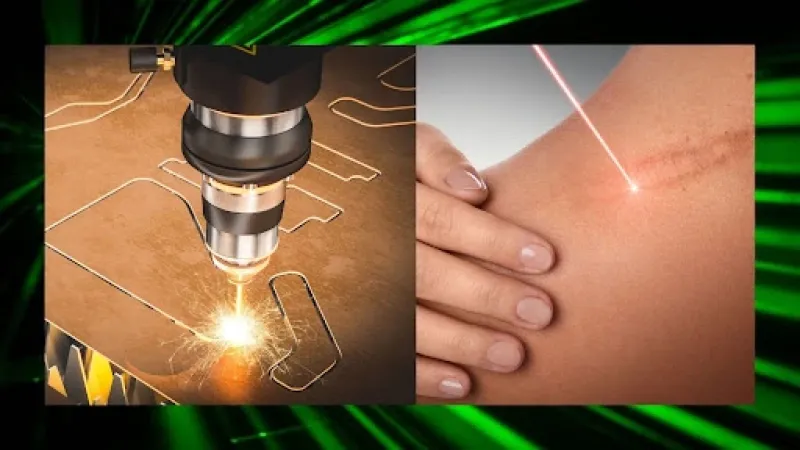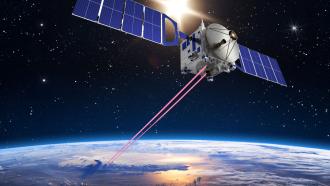
Lasers are incredibly powerful tools used in everything from manufacturing to surgery. Today, lasers have been employed even to make observations of the quantum behaviour of fundamental particles, which requires an incredible amount of precision. Apart from the engineering of such a laser, to correctly predict the outcomes, our theories also need to be sufficiently accurate to understand how the particles of light, or photons, in the laser interact with the atoms in materials, causing the material to heat up.
A new study from the Indian Institute of Space Science and Technology (IISST), Thiruvananthapuram, dives into this complex interaction between light and matter, offering a new way to accurately predict how materials respond to pulsed laser heating, even when the laser's behaviour is a bit unpredictable.
Did you know? The Nd:YAG laser used in the study is a common type of laser that can emit pulses of light lasting only nanoseconds – that's billionths of a second! |
A significant challenge in understanding laser-material interactions is how the interaction evolves over time. Predicting the thermal response under conditions where the laser's intensity or heat input changes over time, and where the material's surface itself might be changing due to the laser can be quite complex. For their study, the team used a mathematical technique called the Laplace transform method to develop precise analytical solutions for these complex scenarios.
The core of their work involves solving the Fourier heat conduction equation, which is the fundamental law describing how heat moves through materials. They modeled the laser's heat as a source that decreases in intensity both over time, like a fading light source and through the material's depth, by being absorbed as it passes through. The Beer-Lambert absorption model, which is a well-established way to understand how light is absorbed was used to describe its behaviour within the material.
To model the laser and material accurately, they used a case study involving a specific type of laser, a neodymium-doped yttrium aluminium garnet (Nd:YAG) laser, and steel, a common material in manufacturing. They also calculated the speed at which the steel surface recedes due to the interaction with the laser, using the Hertz-Knudsen equation, which describes how atoms escape from a heated surface.
Using this method, the researchers were able to provide exact, or closed-form, solutions for scenarios that were previously very difficult to model. Many existing methods rely on approximations, which affect accuracy, or complex computer simulations, which can be time-consuming and sometimes less precise. The new analytical approach offers a more direct and accurate way to understand the heat flow.
The researchers also conducted a parametric study, testing different settings to see how they affect the outcome. They explored how changing the laser's absorption coefficient, or how much light gets absorbed, and its lapse rate, or how quickly its intensity fades over time, impacts the material's temperature. Their findings showed that these factors have a significant and distinct influence on how heat spreads through the material. For instance, they found that as the absorption coefficient increases, the temperature gradient becomes steeper, leading to a faster steady state. Similarly, they observed that the way the heat source decays over time versus space leads to different temperature distributions.
The team validated their analytical solutions by comparing them with numerical simulations, showing excellent agreement and providing confidence in the accuracy of their new method. While their model assumes constant material properties, like thermal conductivity and specific heat, real-world material properties can change dynamically with temperature, limiting the accuracy of the model. The researchers suggest that future work incorporate these complexities using more advanced techniques.
By providing an accurate predictive model, engineers can optimise laser parameters for applications, such as cutting, welding, drilling, and surface treatment. This could lead to improved efficiency, better product quality, and reduced material waste. For example, in microelectronics manufacturing, where lasers are used to create tiny circuits, understanding heat distribution is crucial to prevent damage to delicate components. In the medical field, lasers are used for surgery and tissue ablation, and precise thermal control is paramount for patient safety and treatment effectiveness. This research offers a powerful tool for engineers and scientists to design and control these advanced laser applications with greater confidence, ultimately benefiting society through more sophisticated manufacturing processes and medical technologies.
This article was written with the help of generative AI and edited by an editor at Research Matters.






